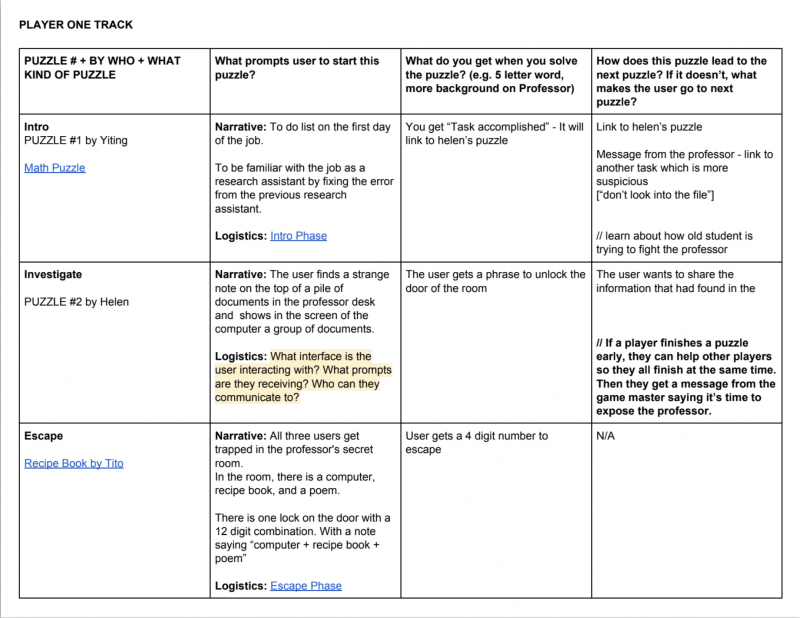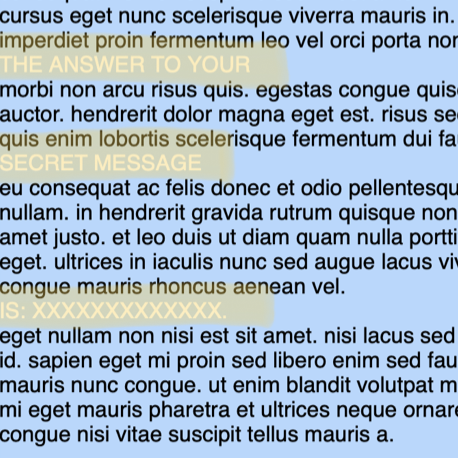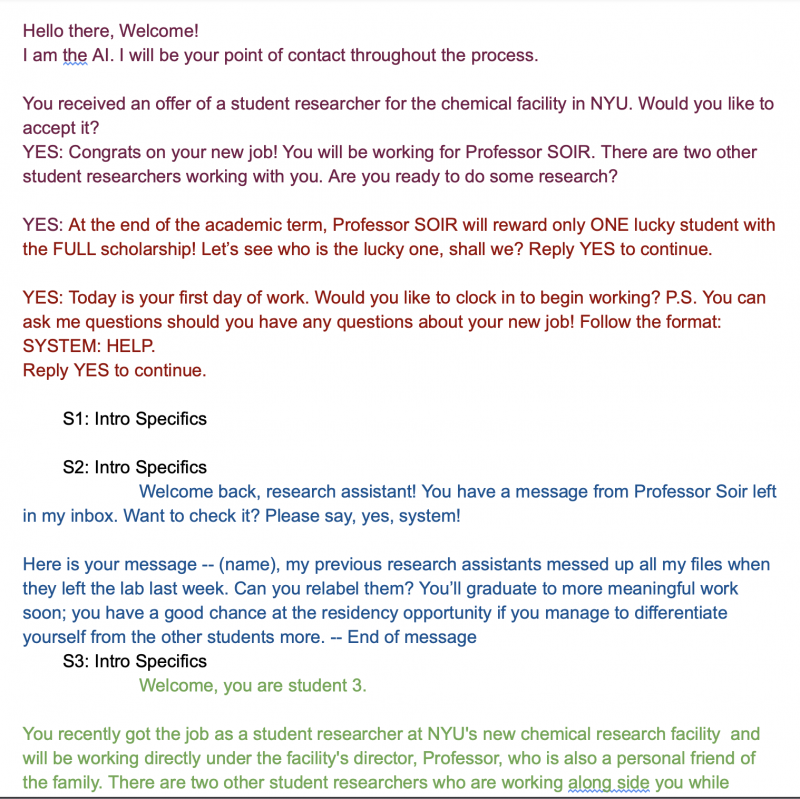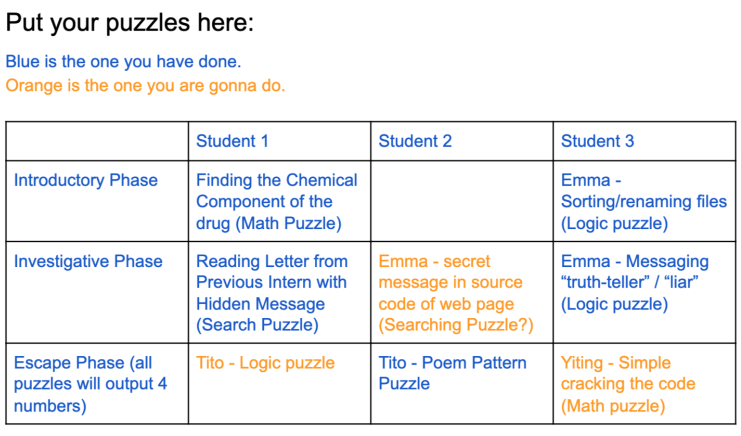This week, we were asked to work with our groups–my group members included Candy, Helen, and Tito–to come up with ideas for an escape room then report back with our field notes. We spent about three hours over two meetings discussing what we felt should be considered when planning our escape room.
Most of the time was spend discussing tactics and approaches to the escape room, rather than the narrative. We discussed things from the reading this week, such as how participants generally don’t appreciate red herrings in the game, flow (linear vs open), rewarding players with pieces of the story as they unlock puzzles, and the importance of each piece having relevancy and questioning its place in the room.
In terms of story ideas, I had more ideas about what I’d like to see rather than super fleshed-out storylines. I would really like to see some kind of “opposite of an escape room” where you’re trying to trap someone in a place–either, for example, (on the tame end of the spectrum) keeping someone from leaving too early before their surprise party (ideally, it would be you that you were trapping, unknowingly, and when you leave it’s your surprise party!) or (on the more extreme end) keeping a mad scientist in his high-tech lab from leaving and exposing the world to his deadly bio-toxin.
I also had an idea that I think would be cool to somehow incorporate. Instead of using timers, using a visual representation–such as saying “before this person reaches the door at the end of the hall” and knowing that the time it takes is 30 seconds (on the backend) and being able to see the pace of the person moving and their distance from the door.
So, below are from our notes. Here’s what we came up with story-wise:
Narrative: You, as the player, are tracking down a thief who stole valuable information; however, it turns out it was not a thief, but, rather, an investigative reporter who found some wrongdoing at a pharmaceutical company.
Details of story:
- You’re a private investigator hired by company that produces miraculous life-saving products to track down a thief who stole a secret formula. This secret formula is needed to start production of a miracle life-saving drug.
- After some investigating, you’re able to track down the name of the thief.
- You find the diary or notes of the thief after doing some hacking (possibly email)
- After reading the diary, you realize that this thief is a journalist/reporter and the company that hired you is evil!
- In the end you must decide between good and evil.
Here is what we came up with logistics-wise:
- Single player, no game master, all web-based
- Undecided on linear or open format
- There’s no explicit room in this, more of just a puzzle or experience rather than an escape room
- The rules of the room:
- Limited time to play (less than half an hour active time) or you lose
- Unsupervised
- Limitations of the web browser
- Browsing the internet is allowed (maybe even ingrained in the puzzles?)
- Game starts with employment opportunity email for player who is a private investigator.
- Room is web-based; potential artifacts/clues via pdf and other digital formats.
- Different challenges will all be of the same type – puzzles (no physical challenges)
- Hidden text in a web page
- Word search
- Learing how to do something online and then applying the skill (morse code?)
- Finding clues in written articles (first word of each paragraph leads to a sentence)
- Finding clues in HTML comments in a web page
- Hacking into someone’s desktop to find clues (remote log in)
- These challenges will reveal more of the story as the game goes on, as rewards
- The game is set up with a descriptive email introduction — an employment opportunity email for player who is a private investigator.





